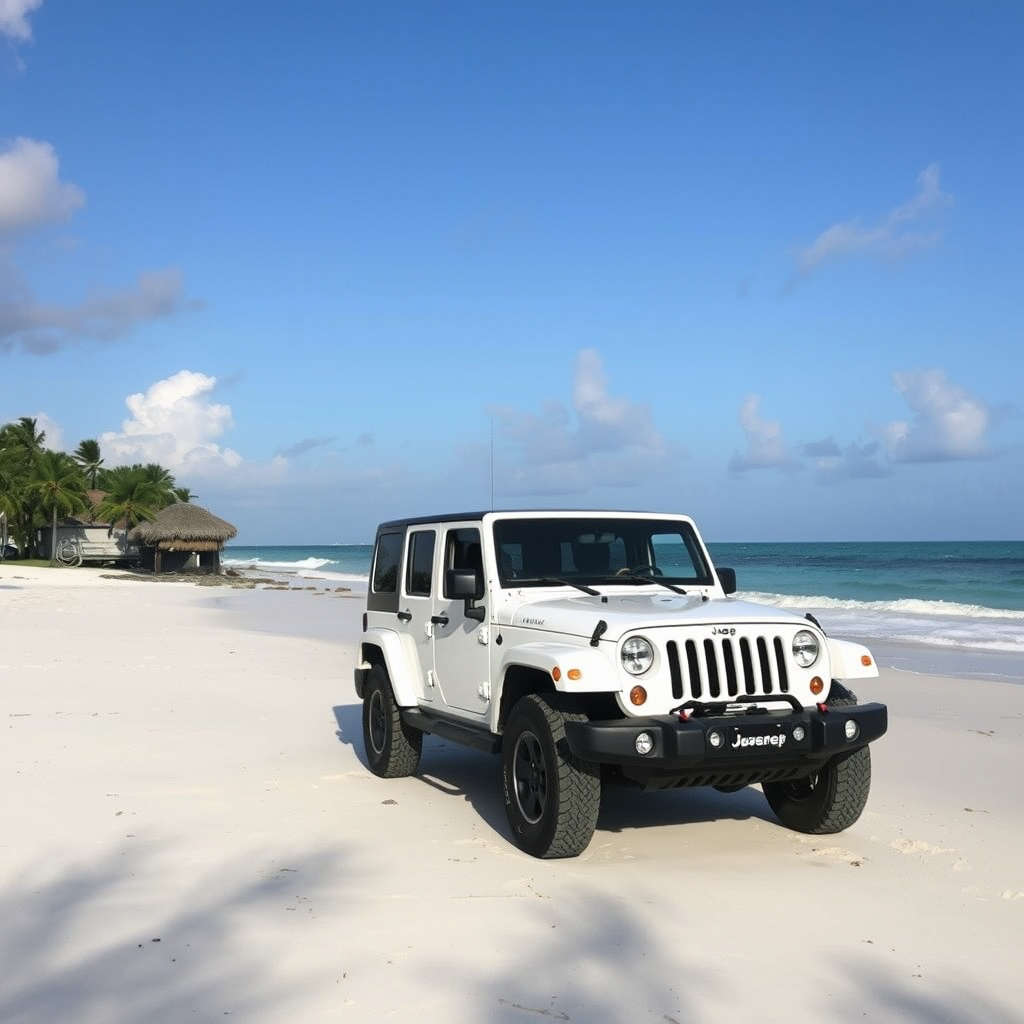Exploring the beaches of Florida with your Jeep is an exhilarating experience that offers both adventure and relaxation. With miles of sandy shores and the sun shining above, Florida's beaches are perfect for off-roading enthusiasts. This comprehensive guide will provide you with all the necessary information about beach driving in Florida, focusing on the best spots, regulations, and tips to make your journey unforgettable. Whether you're a local from St. Augustine or visiting from nearby areas like Jacksonville or Ormond Beach, this article will help you navigate the sandy terrains with ease.

- Table of Contents
- The Best Beaches for Jeep Driving in Florida: Discover the top beaches in Florida where driving is permitted, with a focus on Daytona Beach and New Smyrna Beach.
- Preparing Your Jeep for Beach Driving: Learn what equipment and preparations are necessary to safely drive your Jeep on the beach.
- Regulations and Permits for Beach Driving: Understand the legal requirements and how to obtain necessary permits for driving on Florida beaches.
- Driving Techniques for Sand: Explore the best practices for maneuvering your Jeep on sandy surfaces to avoid getting stuck.
- Environmental Considerations and Safety Tips: Ensure your beach driving adventure is safe and environmentally friendly.
The Best Beaches for Jeep Driving in Florida
Florida offers some of the most iconic beach driving locations, particularly in Volusia County. Daytona Beach, often referred to as the “World’s Most Famous Beach,” is a prime spot for Jeep enthusiasts. With its hard-packed sand, Daytona Beach allows for easy driving, making it a favorite among locals and tourists alike. Nearby, New Smyrna Beach offers similar driving opportunities with designated areas for vehicles.
In Daytona Beach, you can access the beach from several points, including:
- Harvard Drive in Ormond Beach: Known for its scenic views and easy access.
- International Speedway Boulevard in Daytona Beach: A historic entry point offering a unique beach driving experience.
- Van Avenue in Daytona Beach Shores: Provides a quieter, less crowded environment for a relaxing drive.
These locations are perfect for Jeep owners from areas like Palm Coast and Vilano Beach, who are looking for a day of sun and adventure. Always check local regulations and tide schedules before heading out to ensure a safe and enjoyable experience.
Preparing Your Jeep for Beach Driving
Before hitting the beach, it's crucial to prepare your Jeep to handle the unique challenges of sand driving. Here are essential items and steps to consider:
- Tire Pressure Adjustment: Lowering your tire pressure to around 20 PSI increases the tire's footprint, providing better traction on sand. Use a tire gauge and valve bleeders to achieve the desired pressure.
- Essential Gear: Equip your Jeep with a shovel, recovery straps, and an air compressor. These tools are vital for getting unstuck and reinflating tires after leaving the beach.
- Vehicle Inspection: Conduct a thorough check of your Jeep's drivetrain and steering components. Sand can create significant resistance, so ensuring your vehicle is in top condition is vital.
For those in areas like Ponte Vedra Beach and St. Johns, FL, these preparations will ensure that your Jeep is ready for the sandy adventures ahead.
Regulations and Permits for Beach Driving
Driving on Florida's beaches requires adherence to specific regulations to protect both the environment and beachgoers. In Volusia County, a daily fee of $30 is required for non-residents to drive on the beach, with annual passes available for frequent visitors. Residents can register for free passes through the ParkVolusia website.
When planning your beach driving adventure from locations like Nocatee or Flagler Beach, remember to:
- Obtain Necessary Permits: Purchase your daily or annual pass online or at designated locations.
- Follow Speed Limits: The maximum speed on the beach is typically 10 MPH to ensure safety.
- Be Aware of Tidal Conditions: Driving is only permitted during specific times, depending on the tides.
For more information on permits and regulations, you can contact ParkVolusia at their Daytona Beach office or visit their website.
Driving Techniques for Sand
Mastering sand driving techniques is essential for a smooth and enjoyable experience. Here are some tips to keep in mind:
- Engage 4WD: Using a 4WD vehicle like a Jeep Wrangler makes navigating soft sand much easier. Engage 4-hi for general driving and switch to 4-lo if you encounter challenging terrain.
- Maintain Momentum: Keep a steady pace to avoid getting bogged down. If you need to stop, try to do so on firmer sand.
- Avoid Sudden Movements: Sudden braking or sharp turns can cause your vehicle to sink. Instead, make gradual adjustments to your speed and direction.
These techniques are especially useful for drivers from Jacksonville and Daytona Beach, where beach driving is a popular pastime.
Environmental Considerations and Safety Tips
While enjoying the thrill of beach driving, it's essential to consider environmental impacts and prioritize safety. Here are some guidelines:
- Respect Conservation Zones: Stay within designated driving areas to protect wildlife and fragile ecosystems.
- Pack Out Trash: Bring bags to collect any waste and leave the beach cleaner than you found it.
- Be Mindful of Wildlife: Watch for sea turtles and other wildlife that may be on the beach.
For Jeep owners in St. Augustine and other nearby areas, following these tips will ensure that beach driving remains a sustainable and enjoyable activity for everyone.
For more insights and updates on beach driving and other automotive topics, visit Our Blog at Hanania CDJR. If you're ready to explore the latest Jeep models perfect for beach adventures, check out our New Jeep Inventory in St Augustine. For any questions or to schedule a service, feel free to contact us at Hanania CDJR or call us at (904) 295-0416.
© 2025 Hanania CDJR